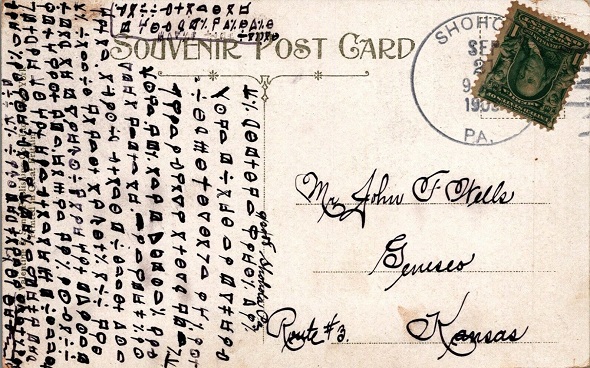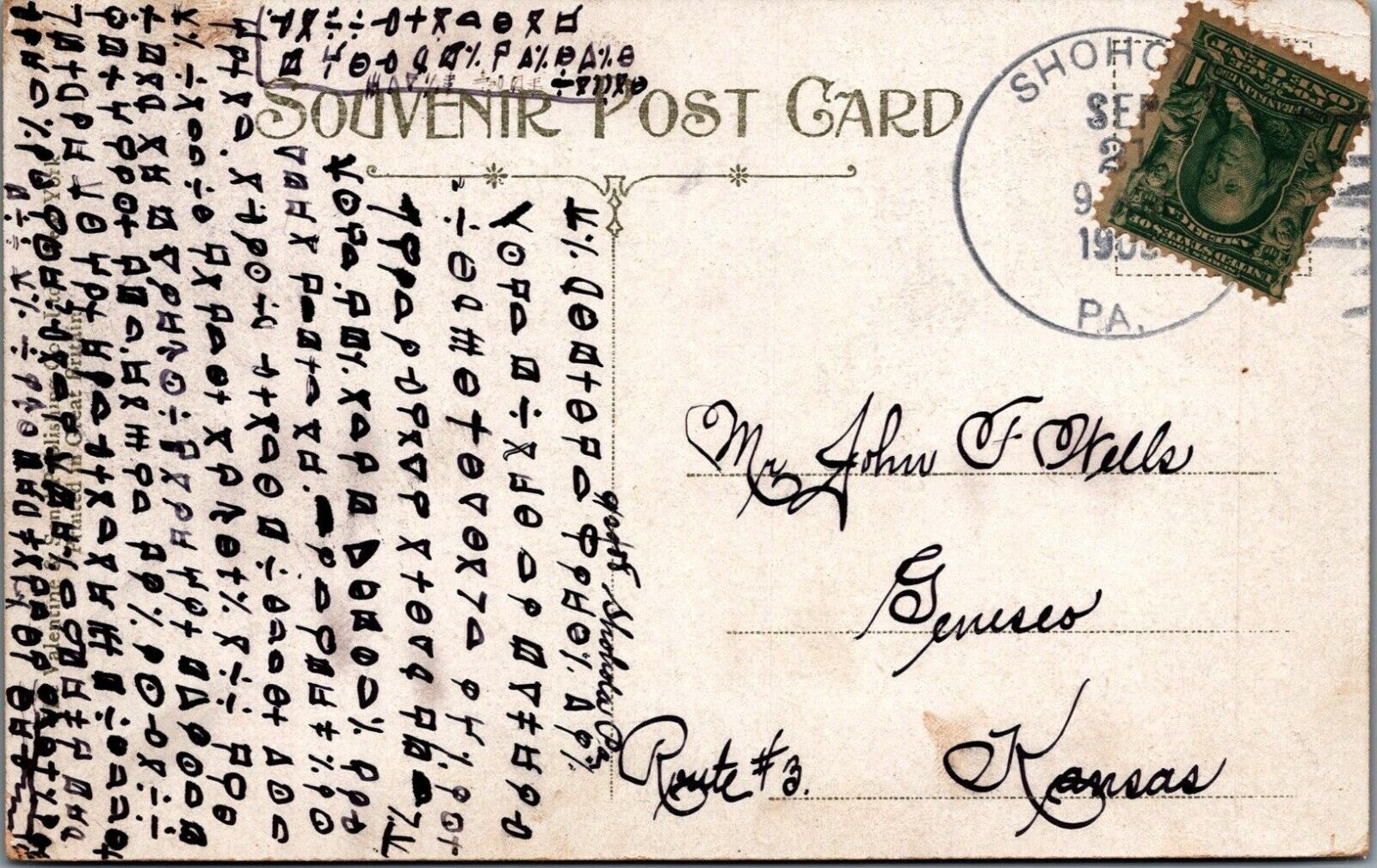An encrypted postcard from Pennsylvania and more
Around the year 1908, an unknown person sent a coded postcard from Pennsylvania to Kansas. Can a reader decode it?
Some of my blog readers have published interesting posts in the last few days, which I would like to point out here.
Contributions of my readers
First of all, I would like to mention that Richard SantaColoma has written a blog article about the Voynich manuscript. It is about the much debated question whether the known manuscript is a forgery made by Wilfried Voynich himself a good 100 years ago.
Nils Kopal has also published something again. He reports on his Youtube channel about the most important lectures of this year’s HistoCrypt. If my seven-minute video on the HistoCrypt was not detailed enough, you should take a look:
Already a few weeks ago Christian Baumann drew my attention to a software he has developed. It is a factorizer, i.e. a program that decomposes a prime number product into its factors. A factorizer can be used to crack the RSA method, which was used, for example, by the Austrian terrorist Franz Fuchs.
George Lasry was not idle either, which I will discuss in a separate article in the next few days.
An encrypted postcard
And then came another tip from Gerry Haynaly. He made me aware of another encrypted postcard being offered on eBay. Of course I like to blog about it. Let’s start with the picture side:
The motif shows a wooded area near Scranton in the US state of Pennsylvania. Scranton is 70 kilometers north of Allentown, which is best known in this country for a song by Billy Joel. New York City is also not far away – just under 100 kilometers to the southeast. However, I could not find Moosie Lake, which is mentioned here, anywhere.
The card was postmarked at Shohola, a village near Scranton. If I see it correctly, the recipient is a man named John F. Wells, which indicates that the card was written by a woman. John F. Wells lived in Geneseo, a village in Kansas.
The year on the postmark reads 190X, although unfortunately I can’t read the last digit. According to the eBay page, this card was made between 1907 and 1914. Since the lower part of the digit is recognizable as round, I would guess 1908 or 1909.
The encoding method used is probably a simple letter substitution. Can a reader determine the plaintext?
If you want to add a comment, you need to add it to the German version here.
Follow @KlausSchmeh
Further reading: Ungelöst: eine verschlüsselte Feldpostkarte aus dem Jahr 1918
Linkedin: https://www.linkedin.com/groups/13501820
Facebook: https://www.facebook.com/groups/763282653806483/





Letzte Kommentare